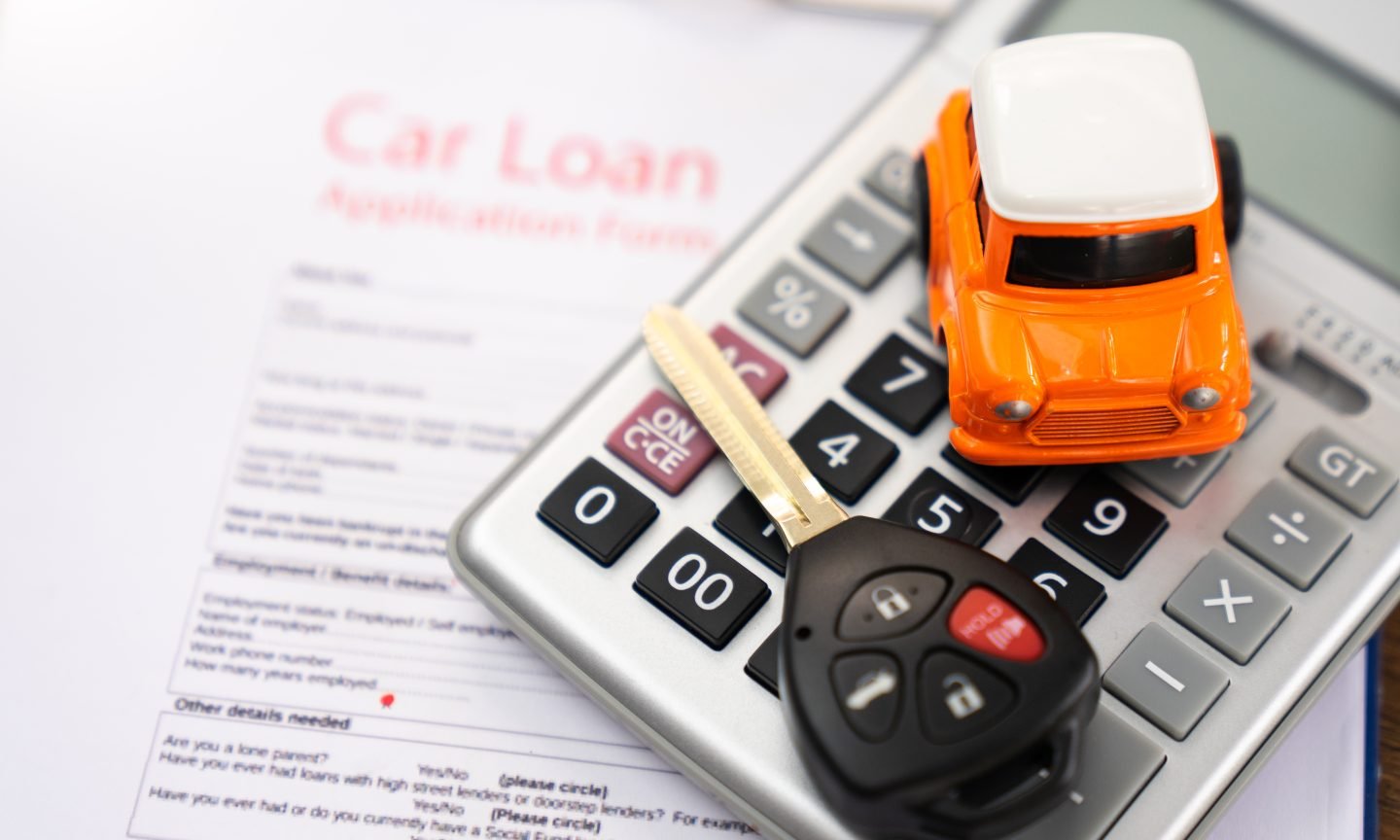

Finance
What Is A Grace Period For Auto Loan?
Published: February 21, 2024
Learn about the importance of a grace period for auto loans and how it can benefit your finance management. Understand the impact on your budget and financial planning.
(Many of the links in this article redirect to a specific reviewed product. Your purchase of these products through affiliate links helps to generate commission for LiveWell, at no extra cost. Learn more)
Table of Contents
Introduction
Understanding the Grace Period for Auto Loans
When it comes to auto loans, the concept of a grace period can be both a saving grace and a source of confusion for many borrowers. Understanding the intricacies of the grace period is crucial for anyone navigating the world of car financing.
A grace period for an auto loan refers to a set period of time, usually around 10-15 days, during which a borrower can make a payment after the due date without incurring late fees or negative credit reporting. This buffer period can provide borrowers with some breathing room if they encounter unexpected financial constraints or logistical issues that prevent them from making their payment on time.
However, it's important to note that not all auto loans come with a built-in grace period. The availability and duration of a grace period can vary depending on the lender and the specific terms of the loan agreement. Therefore, it's essential for borrowers to carefully review the terms and conditions of their auto loan to determine whether a grace period is included and, if so, the details of how it operates.
Understanding the nuances of a grace period is crucial for borrowers to make informed decisions and effectively manage their finances. In the following sections, we will delve into the benefits and potential drawbacks of a grace period, as well as provide insights on how to optimize this feature to your advantage. Whether you're considering taking out an auto loan or already have one in place, gaining a comprehensive understanding of the grace period can empower you to navigate the world of car financing with confidence and clarity.
Understanding the Grace Period for Auto Loans
When it comes to auto loans, the concept of a grace period can be both a saving grace and a source of confusion for many borrowers. Understanding the intricacies of the grace period is crucial for anyone navigating the world of car financing.
A grace period for an auto loan refers to a set period of time, usually around 10-15 days, during which a borrower can make a payment after the due date without incurring late fees or negative credit reporting. This buffer period can provide borrowers with some breathing room if they encounter unexpected financial constraints or logistical issues that prevent them from making their payment on time.
However, it’s important to note that not all auto loans come with a built-in grace period. The availability and duration of a grace period can vary depending on the lender and the specific terms of the loan agreement. Therefore, it’s essential for borrowers to carefully review the terms and conditions of their auto loan to determine whether a grace period is included and, if so, the details of how it operates.
Understanding the nuances of a grace period is crucial for borrowers to make informed decisions and effectively manage their finances. In the following sections, we will delve into the benefits and potential drawbacks of a grace period, as well as provide insights on how to optimize this feature to your advantage. Whether you’re considering taking out an auto loan or already have one in place, gaining a comprehensive understanding of the grace period can empower you to navigate the world of car financing with confidence and clarity.
Benefits of a Grace Period
A grace period for an auto loan offers several valuable benefits for borrowers, providing them with a financial safety net and peace of mind. Understanding these advantages can help borrowers make the most of this feature:
- Flexibility in Payment: One of the primary benefits of a grace period is the flexibility it affords borrowers. In the event of unexpected financial challenges or delays, having a brief window of time after the due date can prevent them from incurring late fees or facing adverse credit consequences.
- Protection Against Unforeseen Circumstances: Life is unpredictable, and unforeseen events such as medical emergencies, job loss, or natural disasters can impact a borrower’s ability to make timely payments. A grace period serves as a safeguard, offering a brief reprieve during challenging times.
- Opportunity for Financial Planning: With a grace period in place, borrowers can strategically manage their monthly cash flow. They can align their payment dates with their income schedule, ensuring that they have the necessary funds to make timely payments without undue stress.
- Preservation of Credit Score: Timely payments are crucial for maintaining a positive credit history. A grace period can prevent a late payment from being reported to credit bureaus, helping borrowers safeguard their credit scores and financial standing.
- Enhanced Customer Satisfaction: Lenders who offer a grace period demonstrate a commitment to customer satisfaction and understanding of borrowers’ financial challenges. This can foster a positive relationship between the borrower and the lender, enhancing trust and loyalty.
By leveraging these benefits, borrowers can navigate their auto loan obligations with greater confidence and resilience, knowing that they have a cushion of time to address any unexpected hurdles that may arise.
Potential Drawbacks of a Grace Period
While a grace period can offer valuable advantages, it’s essential for borrowers to be aware of potential drawbacks associated with this feature. Understanding these drawbacks can help borrowers make informed decisions and mitigate any negative implications:
- Complacency in Payment Habits: Some borrowers may view the grace period as a safety net and become complacent in their payment habits. This can lead to a mindset of consistently relying on the grace period, which may result in financial mismanagement and a cycle of delayed payments.
- Accrual of Interest: In certain cases, interest may continue to accrue during the grace period, especially if the loan has a daily interest calculation method. This means that even though late fees are waived, borrowers may still incur additional interest charges for the extended payment timeline.
- Impact on Long-Term Financial Health: While a grace period provides temporary relief, consistently relying on it can mask underlying financial challenges. Borrowers should use the grace period sparingly and proactively address any financial difficulties to maintain long-term financial stability.
- Limitations on Credit Improvement: If a borrower consistently utilizes the grace period, it may hinder their ability to demonstrate responsible payment behavior and proactive financial management, which are essential for building a positive credit history.
- Varied Grace Period Terms: Not all grace periods are created equal. Some lenders may offer shorter grace periods or have specific conditions attached to this feature. Borrowers should carefully review the terms of the grace period to understand its limitations and implications.
By acknowledging these potential drawbacks, borrowers can approach the grace period with a balanced perspective, utilizing it as a helpful tool while remaining vigilant about maintaining healthy financial habits and minimizing any adverse impacts.
How to Make the Most of a Grace Period
Effectively leveraging the grace period for an auto loan involves strategic financial management and proactive decision-making. By implementing the following practices, borrowers can maximize the benefits of the grace period while mitigating its potential drawbacks:
- Payment Planning: Use the grace period as a buffer to align your payment date with your income schedule. By strategically planning your payments, you can ensure that you have the necessary funds available without experiencing undue financial strain.
- Emergency Fund Allocation: Instead of consistently relying on the grace period for financial flexibility, consider building an emergency fund to address unexpected expenses. This proactive approach can reduce the frequency of utilizing the grace period and promote long-term financial stability.
- Timely Communication with Lender: If you anticipate difficulty in making a payment within the grace period, communicate proactively with your lender. Discussing potential challenges and exploring alternative payment arrangements can demonstrate responsible financial behavior and maintain a positive relationship with the lender.
- Financial Self-Assessment: Regularly assess your financial health and budget to identify areas for improvement. If you find yourself consistently relying on the grace period, it may be indicative of underlying financial challenges that require attention and proactive resolution.
- Limiting Grace Period Utilization: While the grace period offers valuable flexibility, aim to use it sparingly. Consistently relying on the grace period may indicate a need for reevaluating your budget, expenses, and overall financial management to avoid potential long-term repercussions.
By adopting these proactive strategies, borrowers can harness the benefits of the grace period while maintaining financial discipline and resilience. The grace period can serve as a valuable tool when used judiciously and in conjunction with sound financial practices.
Conclusion
Understanding the intricacies of a grace period for auto loans is essential for borrowers seeking to navigate their financial obligations with confidence and foresight. While the grace period offers valuable benefits such as flexibility in payment and protection against unforeseen circumstances, it also presents potential drawbacks that warrant careful consideration. By approaching the grace period with a strategic mindset and proactive financial management, borrowers can optimize this feature to their advantage while safeguarding their long-term financial well-being.
It’s crucial for borrowers to view the grace period as a temporary buffer rather than a consistent fallback option. Strategic payment planning, effective communication with lenders, and a proactive approach to financial self-assessment can empower borrowers to make the most of the grace period while minimizing its potential negative impacts. Additionally, building an emergency fund and limiting reliance on the grace period can contribute to sustained financial stability and responsible financial management.
Ultimately, the grace period serves as a valuable tool for borrowers facing unexpected financial challenges or logistical hurdles. By leveraging its benefits judiciously and maintaining a proactive approach to financial management, borrowers can navigate their auto loan obligations with resilience and foresight. As with any financial feature, a balanced and informed approach to utilizing the grace period can empower borrowers to effectively manage their auto loans while preserving their financial health and credit standing.














